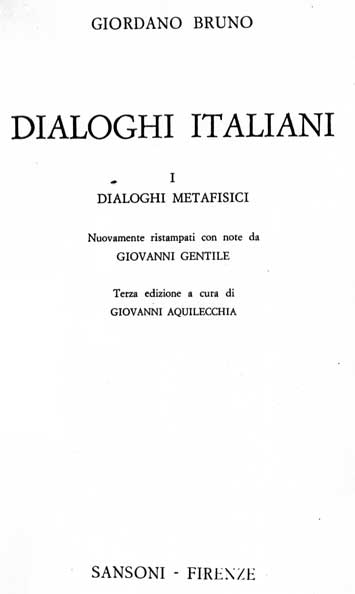De la causa, principio et uno. A l'illustrissimo signor di Mauvissiero, stampato in Venezia, anno MDLXXXIIII, in Giordano Bruno, Dialoghi italiani, I, Dialoghi metafisici, nuovamente ristampati con note da Giovanni Gentile, terza edizione a cura di Giovanni Aquilecchia, Sansoni, Firenze, 1958, pp. 173-342.
Among the Italian philosophical dialogues by Bruno, De la causa, principio et uno (published at London in 1584 and divided in five dialogues) is the one most devoted to a discussion of the Aristotelean-scholastic tradition, with specific reference to key-concepts of metaphysics: cause, principle, substance, form, matter etc. In this work, Bruno presents an ‘ontology’ in close connection with his philosophy of nature. Polemizing with the Aristotelianism of the Schools, Bruno refers to the Platonic and Neoplatonic tradition, for instance by using the concept of ‘world-soul’. His real aim is to link metaphysics and physics in a discourse which regards the Being as a physical Being, that’s to say, the universe. In this perspective, form and matter are intimately united, constituting the unique and indistinct substance. In this way, the traditional dualism of the Aristotelian physics is reduced to a monistic conception of the universe, which implies the fundamental unity of every reality and – refering to Cusanus – the coincidence of opposites (coincidentia oppositorum) in the infinite unity of Being.
Click here to go directly to the text
|
|
In De la causa, principio et uno Bruno elaborates the physical theory on which his conception of the universe is based: “form” and “matter” are intimately united and constitute the “one.” Thus, the traditional dualism of the Aristotelian physics is reduced by him to a monistic conception of the universe, implying the basic unity of all substances and the coincidence of opposites in the infinite unity of Being.
